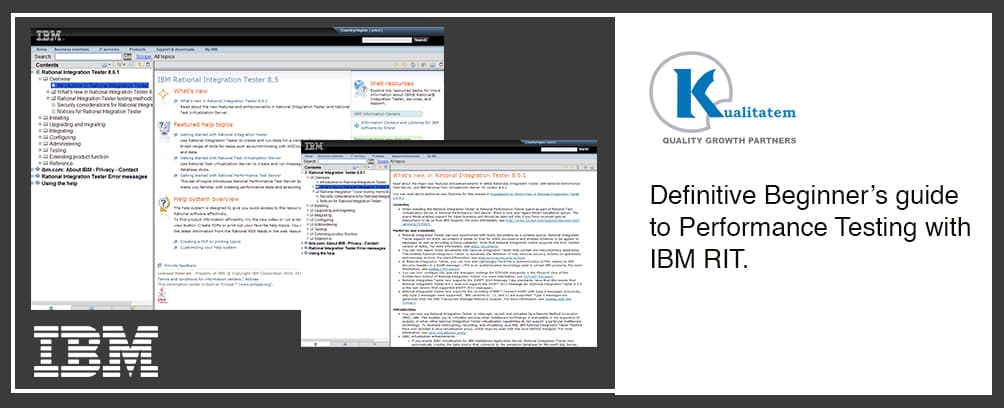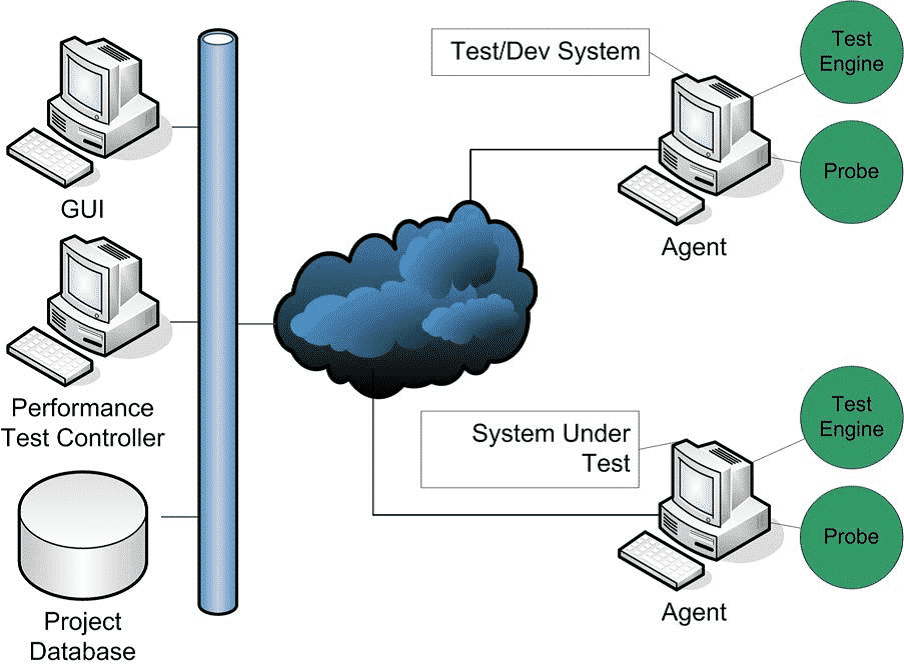Beginner’s Guide to Performance Testing with IBM RIT

- October 27, 2014
- admin
IBM® Rational® Integration Tester is now a part of the IBM® Rational® Test Workbench, acquired from the Green Hat tester. RIT basically has the capabilities to perform Performance Testing, Service Virtualization, Functional Testing, and Integration testing of highly complex business applications. It allows you to record your business scenario and apply your business process testing The Rational Integration Tester is a powerful tool for developing automatic tests for applications that support all major protocols being used in the IT industry.
RIT Features:
- Record and Play business scenario multiple times monitoring memory and CPU utilization applied by the test
- Manage a number of events across multiple workstations.
- Manage Multiple Load generators (Agents) automatically.
- Capture and record KPI’s from the execution of tests.
- Analysis of the results.
- Compare current and past test results.
- Save the charts
- Changing the load on the system to determine how the system behaves under multiple concurrent load conditions.
System Components
The IBM Rational Integration Tester has several components.
The main components are as follows:
- Rational Integration Tester GUI – Create, Edit, and Evaluate the results of different performance tests.
- Agent – RIT processes that launch Test Engines and Probes
- Test Engine – This is the main component of IBM Rational Integration Tester that executes performance tests
- Probes – These are different run time monitoring components that monitor the system under test, such as servers and processes
Architecture:
Following above architecture diagram
- RIT agent must be installed and in running state on every computer that runs a probe or a test engine instance to manage these processes for monitoring.
- Every Agent must be connected to database install on the computer
- The performance test controller computer must be connected to database and the remote agents installed.
Performance Testing in RIT:
The rational integration tester is a powerful tool to perform performance testing for many business applications. RIT specially can be used to test Database load testing exercise. RIT agents are installed on multiple computers and put simultaneous load on the DB server to scale its stress level. These Agents should to be configured and must be in ready state before creating a performance test in RIT. RIT agents provide the capability to record multiple events that can be anything (Database calls, or Web calls) from the system under test. Recording studio inside RIT used to record the system functionality, user want to record.
Iterations and Phases
The load profile defines how the tests in the performance test will run (that is, the rate at which new test iterations will be started). The test is launched in parallel depending on the load profile settings and rate. If you have multiple tests in your performance test, then all tests in the performance tests are executed in parallel. If we want to run all performance tests one by one without any human interaction, then we need to create a Performance Test Suite in which we will add all required performance tests that we want to execute one by one.
IN RIT we have different Load profiles available
- Constant Growth
- Externally Defined
Constant Growth Profile
In Constant, growth profile tests start at a given rate and gradually increase in new test iterations.
Externally Defined
Externally Defined profile, the load test instruction/planning is extracted from a test data set that has been configured by the tester. This profile provides greater flexibility during performance testing to define time for each load test.
How has your experience been in using IBM RIT ? We’d love to hear your thoughts , let us know in the comments below.
We hope you enjoyed reading our insights , please feel free to explore how our services can help you make an impact by delivering a perfect final product that is free of flaws and errors.












